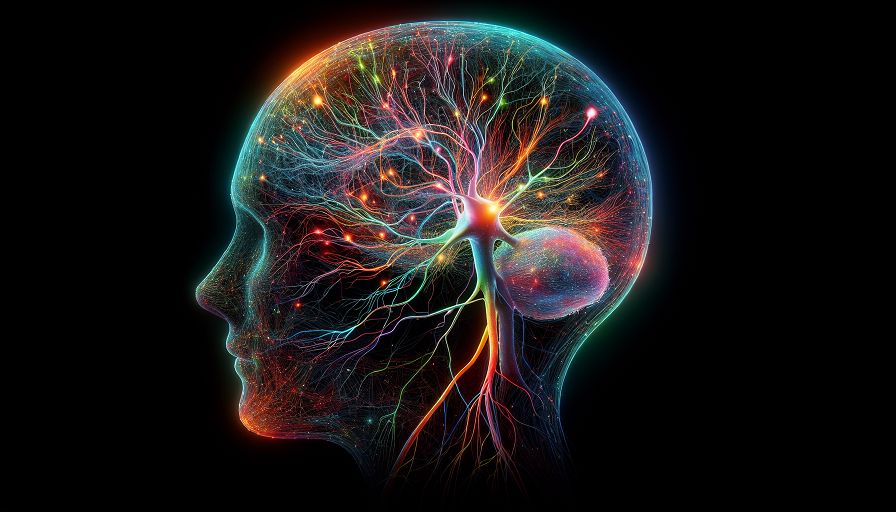
Creativity may seem like a mysterious and magical process, but behind every innovative idea and artistic masterpiece is a complex mix of brain activities. One of the central players in this intricate dance is dopamine, a neurotransmitter that often takes the spotlight for its role in reward and pleasure. But dopamine does more than just make us feel good—it’s a vital part of what makes creativity possible.
Contents
Understanding Dopamine: The Basics
Dopamine is a chemical messenger in the brain that helps transmit signals from one neuron to another. It’s part of our brain’s reward system and plays a significant role in how we experience pleasure, motivation, and satisfaction. When you achieve something rewarding or enjoyable, such as eating delicious food or scoring a goal in a sport, your brain releases dopamine.
But dopamine isn’t just about feeling good; it also influences many other functions, including motor control, mood regulation, and cognitive abilities. In the realm of creativity, dopamine’s role becomes even more fascinating as it directly connects to how we come up with new ideas and solutions.
The Connection Between Dopamine and Creativity
It’s often said that creativity is about thinking outside the box. In neurological terms, this involves exploring different types of brain activity and making unexpected connections between ideas. Dopamine facilitates these processes in several key ways:
Encouraging Novelty Seeking
One of dopamine’s key roles in creativity is its capacity to make us curious and eager to seek out new experiences and ideas. People with higher dopamine levels are often more open to novel experiences, which is a crucial component of creativity. By encouraging what’s called “divergent thinking,” dopamine allows us to stray away from routine thoughts and explore a variety of potential solutions.
Enhancing Problem-Solving
Dopamine is known to improve cognitive flexibility—the ability to adapt to new, changing, or unexpected events. This ability is essential for problem-solving, a major component of creative thinking. When faced with a challenge, elevated dopamine levels can provide the mental agility needed to consider multiple perspectives and hypotheses, enhancing our ability to forge innovative solutions.
Rewarding Creative Efforts
Every time you create something new, dopamine is released, providing that rewarding sensation we often associate with creativity. This builds a positive feedback loop, encouraging more creative thinking and experimentation. In essence, dopamine helps us enjoy not just the end result of creativity, but the process itself.
Factors Influencing Dopamine Levels
Since dopamine plays such a crucial role in creativity, it’s worth understanding what can influence its levels in the brain. Here are some factors that impact dopamine production and availability:
- Diet: Certain foods, particularly those rich in amino acids like tyrosine (found in cheese, soybeans, and meats), can naturally boost dopamine levels.
- Exercise: Physical activity has been shown to increase dopamine production, particularly aerobic exercises like running, swimming, or cycling.
- Sleep: Quality sleep is crucial for maintaining balanced dopamine levels, with poor sleep patterns leading to reductions in productivity and creativity.
- Stress Management: Chronic stress can lower dopamine levels. Activities or practices like meditation, deep-breathing exercises, and relaxation techniques can help manage stress and support balanced dopamine production.
The Role of Brain Supplements in Enhancing Dopamine and Creativity
Given dopamine’s pivotal function in creativity, some individuals turn to brain supplements, also known as nootropics, to potentially enhance cognitive functions. These supplements are designed to improve aspects such as concentration, memory, and creativity by optimizing brain chemistry, including dopamine levels.
Popular Dopamine-Boosting Supplements
- L-Tyrosine: An amino acid found in many protein-rich foods, L-Tyrosine is a precursor to dopamine. Supplementing with L-Tyrosine is believed to support dopamine production, which may enhance focus and cognitive flexibility.
- Ginkgo Biloba: While primarily known for improving memory, Ginkgo Biloba may increase dopamine levels by improving circulation and nutrient delivery to the brain.
- Mucuna Pruriens: Commonly known as velvet bean, this supplement contains L-DOPA, a direct precursor to dopamine, thus potentially enhancing mood and creative thinking.
Dopamine, Creativity, and Mental Health
While the link between dopamine and creativity is significant, balancing dopamine levels is delicate, and both deficiencies and excesses can have implications for mental health. Conditions like ADHD, depression, and schizophrenia have been linked to dopamine imbalances.
People with lower dopamine levels might struggle with motivation and reward-seeking behaviors, affecting their creativity. On the other hand, too much dopamine can lead to mental health issues characterized by heightened perception and racing thoughts, as seen in some cases of bipolar disorder.
Harnessing Dopamine for Enhanced Creativity
If dopamine plays such a beneficial role in creativity, how can we use this knowledge to become more innovative? Here are some practical ways to harness dopamine’s potential:
- Engage in diverse activities: Trying new hobbies or learning new skills can stimulate dopamine release and enhance creativity.
- Set achievable goals: Break your projects or goals into smaller, manageable parts to create more opportunities for dopamine-triggering wins.
- Create rewarding environments: Surround yourself with motivating, inspiring spaces and people who encourage creative exploration.
By understanding dopamine’s role in creativity, we can appreciate the intricate dance of brain chemistry that inspires innovation and art. Embracing activities and lifestyles that naturally boost dopamine can help us unlock our full creative potential, leading to more fulfilling and productive lives.

